Toward the end of the 19th century along the tree-lined North 24th Street with its fine middle and upper class homes of Kountze Place, Presbyterians decided to open Omaha’s first non-religious university. For 30 years, North Omaha was home to the eventual University of Nebraska at Omaha. This is a short history of the University of Omaha.
A New Kind of University

The first higher education institution in Nebraska was proposed for the town of Saratoga in 1863. It never came together though.
Omaha was just over 20 years old when its first higher education facility was opened. Before 1900, the city’s religiously affiliated universities and colleges were increasingly popular and successful. Creighton University, Omaha’s most famous higher education institution, was founded in 1878 by Catholics. Clarkson College began in 1888 and was started by the Episcopal church. The Nebraska Methodist College was started in 1891, and the Omaha Medical College was started as a private business in 1880.
It was into that reality that the Presbyterians decided the city needed a non-religious higher education institution. It was the staff of the Omaha Presbyterian Theological Seminary who decided in the early 20th century to start the new institution, first called the University of Omaha.

First discussed in the city’s media in 1891, the intention of opening the University of Omaha took more than 15 years to actualize. It was in 1908 when a group of faculty from the Seminary founded the University of Omaha. It was private, nonreligious and coed. Seeking to start a higher ed institution that was “free from ecclesiastical control,” they also wanted to ensure “sound learning and practical education.” They succeeded.
The site of the University was near North Omaha’s 1898 Trans-Mississippi Exposition. The Redick Mansion, which was built as a farmhouse in the 1860s and made into a mansion in the 1870s, predated the Expo. However, everything else on 15-acre site of the campus was built after UO was opened.
The “Magnificent Campus”

In 1908, a proposed “magnificent campus” was slated for development between North 21st and North 25th Avenue. With twenty three buildings, the campus had two clusters of buildings. Spread over several blocks, the eastern side of the campus was supposed to abut Kountze Park, with the west side at North 25th Avenue. According to the plan, there eight academic buildings envisioned, including a Law Building. There were also an Administration Building, Gymnasium, President’s Home, Chapel, and a YWCA/YMCA Building, as well as four dormitories and five professors’ homes.
Only a few elements of this plan were built. The following section identifies which ones.
Campus Facilities in North Omaha
There were several buildings on the University of Omaha campus in North Omaha. Here are details about them.
1. Redick Hall

The first building was the Redick Mansion, located at North 24th and Pratt Streets. It was renamed to be appropriate for the campus, and used for more than a decade for classes and other student activities. In 1917, Redick Hall was sold and moved to Minnesota. Learn more from my article called “A History of the Redick Mansion in North Omaha.”
2. Jacobs Gymnasium
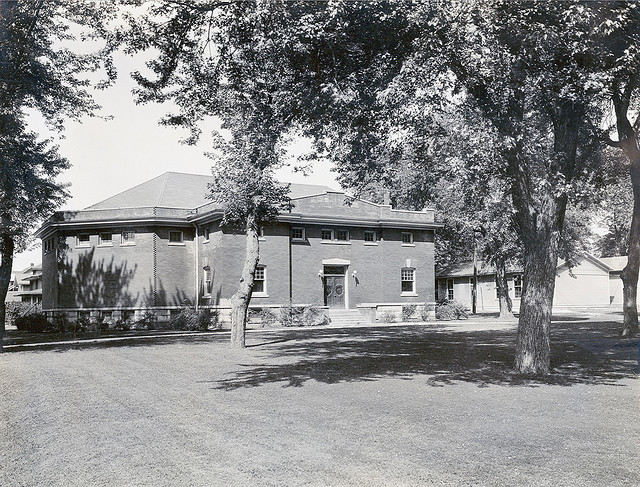
Jacobs Gymnasium was built for the University in 1916. Jacobs Hall was a gymnasium facing North 24th Street, built with $14,000 from the sale of land donated by Lillian Maul. The building was named in honor of her deceased son, John C. Jacobs. Often called the John Jacobs Gym, the building featured a large room, as well as a viewing area on a balcony above the floor. The university hosted several sports teams, including basketball starting in 1910; football in 1911; baseball in 1913, and; women’s basketball in 1915. Read my article about it called “A History of Jacobs Gymnasium.”

Part of the original “Magnificent Campus” plan of 1908, Omaha University stopped using the building in 1937, leading to its second life explained below.
3. Joslyn Hall

George Joslyn, a wealthy printer in Omaha, contributed a lot of his money to charities around Omaha. You know him from the home built for his wife Sarah, which we call the Joslyn Castle now. She contributed the money for the Joslyn Art Museum in memory of her husband after he died. However, when he was still alive George donated $25,000 to Omaha University in 1915, and they named a new building for him. Learn more about it here »
4. Saratoga Science Hall

Built in the first decade of the twentieth century, North Omaha’s Saratoga School went unused during World War I. Desperate for space, Omaha University started using the building as its science hall from 1917 to 1925. This building was demolished in 1937 when the University abandoned it.
5. Saratoga Field

In 1927, businessmen formed the North Omaha Activities Association in order to redevelop Saratoga School’s playing field into a football field for the University’s football team. New bleachers were built for a thousand spectators, and the Saratoga Field was home to OU’s football team until 1951. Then it was redeveloped, as explained below.
6. Other Facilities

There were other buildings, too. The University of Omaha College of Commerce and Finance was located at 1307 Farnam Street, and the College of Law was at 1307 Farnam Street. They stayed in these places from from around 1918 until each of the colleges were consolidated at the present-day UNO campus in 1938. There were at least three other buildings on the North 24th and Evans campus (called the “U” Campus) as well.
Abandonding North Omaha
Instead of building the magnificent campus though, in 1931 the Omaha University president proposed to abandon North Omaha. He suggested building an entirely new facility in line with the major universities growing throughout the Midwest. Proposals included taking over Miller Park to the north, while a US Army board recommended selling Fort Omaha to the university, but neither of those passed. A group of civic leaders wanted to give an area of land near John A. Creighton Boulevard and Lake Street to the university, but that failed. In 1937, a new college president bought a dairy farm on West Dodge Road, and with the help of the Works Progress Administration and other federal and state assistance, the next year the university moved away from North Omaha forever.
Repurposing the Buildings

There were several outcomes from the closure of Omaha University’s North Omaha campus. The population of the surrounding neighborhood was changing during the 1930s, and the closure of the university likely accelerated that process.
The Saratoga Science Hall was demolished as soon as the university was done with the building in 1937. The land became a used car lot for the bustling Saratoga neighborhood. The UO football field behind the Science Hall continued to hold competitions into 1951. That year, it was redeveloped as a commercial site for an A&P Grocery Store, which became a Hinky Dinky store. The grocery store closed around 1968, but the building still stands on the northeast corner of North 24th and Ames Avenue today.
In 1937, Joslyn Hall became known as the University Apartments.
In 1938, UO leased the Jacobs Gym to the City of Omaha, which used funds from the Works Progress Administration to operate it as a community center. The gym and meeting rooms in it were made open to the public all day, with regular activities scheduled by the City of Omaha recreation department. Included at the center were classes on woodcraft, music, handcrafts, sewing, quilting, shopwork, art and dancing, each with seperate programs for children and adults. There was also volleyball, basketball, archery and other sports offered. A 1938 article said, “There will be regular classes in reducing for women,” which was either related to the Great Depression underway at that point, or a fitness program. By 1941, there were three basketball leagues playing in the facility, by then called the Main Recreation Center. The facility proved essential for flood relief by housing victims of the 1943 East Omaha flooding. When it was demolished, a time capsule in the cornerstone was opened to find a copy of the university’s charter and some newspapers inside.
By 1964, both the former Jacobs and Joslyn Halls were the last two original OU buildings left. Left abandoned by the City of Omaha for a decade, the buildings had been badly vandalized and the City did not want to maintain them. Both were demolished in June of that year. Over the next two years, the Evans Tower was built on the site and continues to stand there today.
If you like the photos you see in this article, go like at this awesome photoset by UNO’s Criss Library on Flickr. It’s a great collection and begins to hint at what life was like on the campus.
Finally, here’s a clipping of what the neighborhood is laid out like today for you to compare with the Magnificent Campus plan above.

Tour of the Omaha University Campus in North Omaha
- Redick Mansion: 3612 North 24th Street (Built in 1875; Redick Hall in 1907; deconstructed in 1917)
- John Jacobs Gymnasium: 3614 North 24th Street (Built in 1916; Renamed the WPA Gym in 1937; demolished in 1964)
- Joslyn Hall: 3620 North 24th Street (Built in 1916; Renamed the University Apartments in 1937; demolished in 1964)
- Saratoga Science Hall: 24th and Ames Avenue (Built in 1892; Science Hall starting in 1927; demolished in 1938)
- Saratoga Field: 24th and Meredith Avenue (1925 to 1928)
- South Lab Building No. 11: Designed by John Latenser and Sons sometime between 1916 and 1920. I’m unsure of whether it was built and at what location.
- North Wing Addition: Designed by John Latenser and Sons before 1930, I’m unsure of whether it was built and at what location.
- North Lab: Designed before 1930, this was designed by John Latenser and Sons, also. I’m unsure of whether it was built and at what location.
- North Lab: Designed in 1930 by John Latenser and Sons, I’m unsure of whether it was built and at what location.
MY ARTICLES ABOUT THE HISTORY OF KOUNTZE PLACE
General: Kountze Place | Kountze Park | North 16th Street | North 24th Street | Florence Boulevard | Wirt Street | Emmet Street | Binney Street | 16th and Locust Historic District
Houses: Charles Storz House | Anna Wilson’s Mansion | McCreary Mansion | McLain Mansion | Redick Mansion | John E. Reagan House | George F. Shepard House | Burdick House | 3210 North 21st Street | 1922 Wirt Street | University Apartments
Churches: First UPC/Faith Temple COGIC | St. Paul Lutheran Church | Hartford Memorial UBC/Rising Star Baptist Church | Immanuel Baptist Church | Calvin Memorial Presbyterian Church | Omaha Presbyterian Theological Seminary | Trinity Methodist Episcopal | Mount Vernon Missionary Baptist Church | Greater St. Paul COGIC
Education: Omaha University | Presbyterian Theological Seminary | Lothrop Elementary School | Horace Mann Junior High
Hospitals: Salvation Army Hospital | Swedish Hospital | Kountze Place Hospital
Events: Trans-Mississippi and International Exposition | Greater America Exposition | Riots
Businesses: Hash House | 3006 Building | Grand Theater | 2936 North 24th Street | Corby Theater
Listen to the North Omaha History Podcast show #4 about the history of the Kountze Place neighborhood »
You Might Like…
- A History of North Omaha’s Redick Mansion
- A History of Joslyn Hall in North Omaha
- A History of North 24th Street in Omaha
- A History of North Omaha’s Kountze Place
- A History of the Hash House in North Omaha
MY ARTICLES ABOUT THE HISTORY OF SCHOOLS IN NORTH OMAHA
GENERAL: Segregated Schools | Higher Education
PUBLIC GRADE SCHOOLS: Beechwood | Belvedere | Cass | Central Park | Dodge Street | Druid Hill | Florence | Fort Omaha School | Howard Kennedy | Kellom | Lake | Long | Miller Park | Minne Lusa | Monmouth Park | North Omaha (Izard) | Omaha View | Pershing | Ponca | Saratoga | Sherman | Walnut Hill | Webster
PUBLIC MIDDLE SCHOOLS: McMillan | Technical
PUBLIC HIGH SCHOOLS: North | Technical | Florence
CATHOLIC SCHOOLS: Creighton | Dominican | Holy Angels | Holy Family | Sacred Heart | St. Benedict | St. John | St. Therese
LUTHERAN SCHOOLS: Hope | St. Paul
HIGHER EDUCATION: Omaha University | Creighton University | Presbyterian Theological Seminary | Joslyn Hall | Jacobs Hall | Fort Omaha
MORE: Fort Street Special School for Incorrigible Boys | Nebraska School for the Deaf and Dumb
Listen to the North Omaha History Podcast on “The History of Schools in North Omaha” »
MY ARTICLES ABOUT THE HISTORY OF N. 24TH ST.
NATIONAL REGISTER OF HISTORIC PLACES: 24th and Lake Historic District | Calvin Memorial Presbyterian Church | Carnation Ballroom | Jewell Building | Minne Lusa Historic District | The Omaha Star
NEIGHBORHOODS: Near North Side | Long School | Kellom Heights | Logan Fontenelle Housing Projects | Kountze Place | Saratoga | Miller Park | Minne Lusa
BUSINESSES: 1324 North 24th Street | 24th Street Dairy Queen | 2936 North 24th Street | Jewell Building and Dreamland Ballroom | 3006 Building | Forbes Bakery, Ak-Sar-Ben Bakery, and Royal Bakery | Blue Lion Center | Omaha Star | Hash House | Live Wire Cafe | Metoyer’s BBQ | Fair Deal Cafe | Carter’s Cafe | Carnation Ballroom | Alhambra Theater | Ritz Theater | Suburban Theater | Skeet’s BBQ | Safeway | Bali-Hi Lounge | 9 Center Five-and-Dime
CHURCHES: Calvin Memorial Presbyterian Church | Pearl Memorial United Methodist Church | Immanuel Baptist Church | Mt Moriah Baptist Church | Bethel AME Church | North 24th Street Worship Center
HOUSES: McCreary Mansion | Gruenig Mansion | Redick Mansion
INTERSECTIONS: 24th and Lake | 24th and Pratt | 24th and Ames | 24th and Fort | Recent History of 24th and Lake | Tour of 24th and Lake
EVENTS: 1898 Trans-Mississippi and International Exposition | 1899 Greater America Exposition | 1913 Easter Sunday Tornado | 1919 Lynching and Riot | 1960s Riots
HOSPITALS: Mercy Hospital | Swedish Covenant | Salvation Army
OTHER: Omaha Driving Park | JFK Rec Center | Omaha University | Creighton University | Bryant Center | Jacobs Hall | Joslyn Hall
RELATED: A Street of Dreams | Redlining | Black History in Omaha | North Omaha’s Jewish Community | Binney Street | Wirt Street
MY ARTICLES ABOUT THE HISTORY OF KOUNTZE PLACE
General: Kountze Place | Kountze Park | North 16th Street | North 24th Street | Florence Boulevard | Wirt Street | Emmet Street | Binney Street | 16th and Locust Historic District
Houses: Charles Storz House | Anna Wilson’s Mansion | McCreary Mansion | McLain Mansion | Redick Mansion | John E. Reagan House | George F. Shepard House | Burdick House | 3210 North 21st Street | 1922 Wirt Street | University Apartments
Churches: First UPC/Faith Temple COGIC | St. Paul Lutheran Church | Hartford Memorial UBC/Rising Star Baptist Church | Immanuel Baptist Church | Calvin Memorial Presbyterian Church | Omaha Presbyterian Theological Seminary | Trinity Methodist Episcopal | Mount Vernon Missionary Baptist Church | Greater St. Paul COGIC
Education: Omaha University | Presbyterian Theological Seminary | Lothrop Elementary School | Horace Mann Junior High
Hospitals: Salvation Army Hospital | Swedish Hospital | Kountze Place Hospital
Events: Trans-Mississippi and International Exposition | Greater America Exposition | Riots
Businesses: Hash House | 3006 Building | Grand Theater | 2936 North 24th Street | Corby Theater
Listen to the North Omaha History Podcast show #4 about the history of the Kountze Place neighborhood »
BONUS PICS!







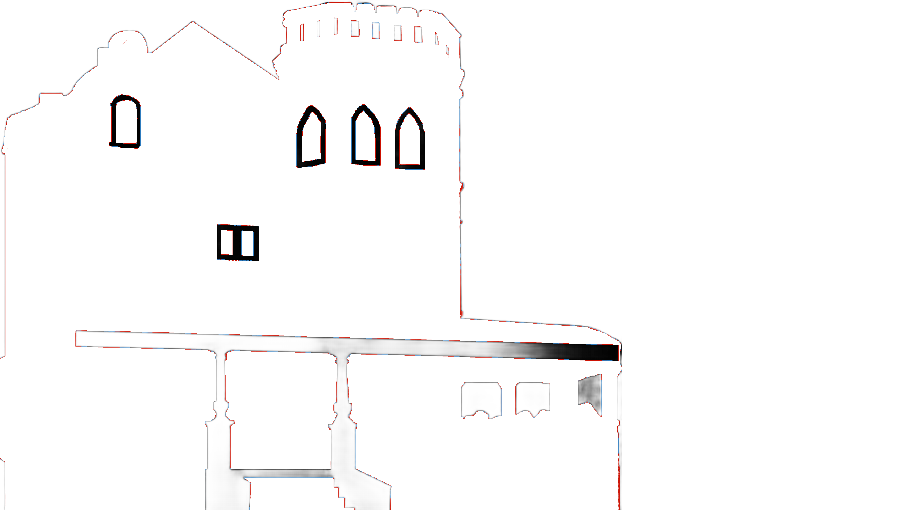



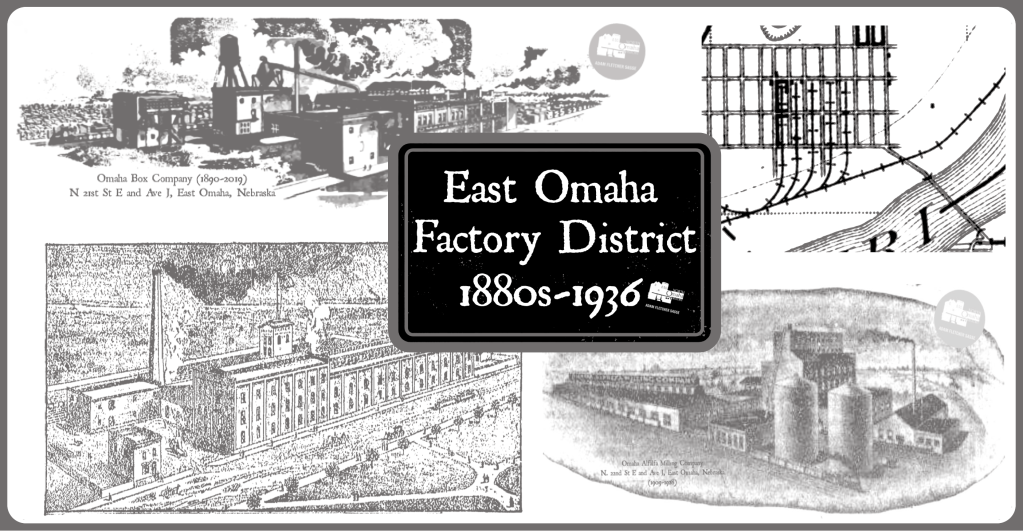
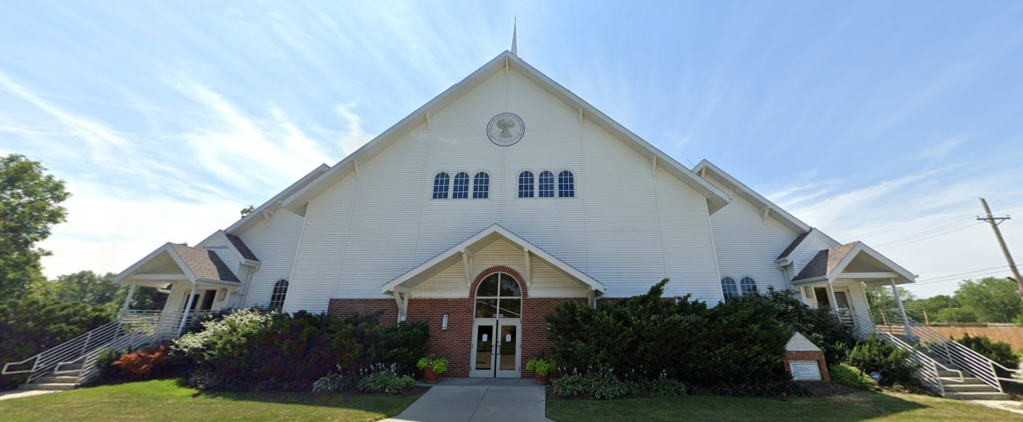
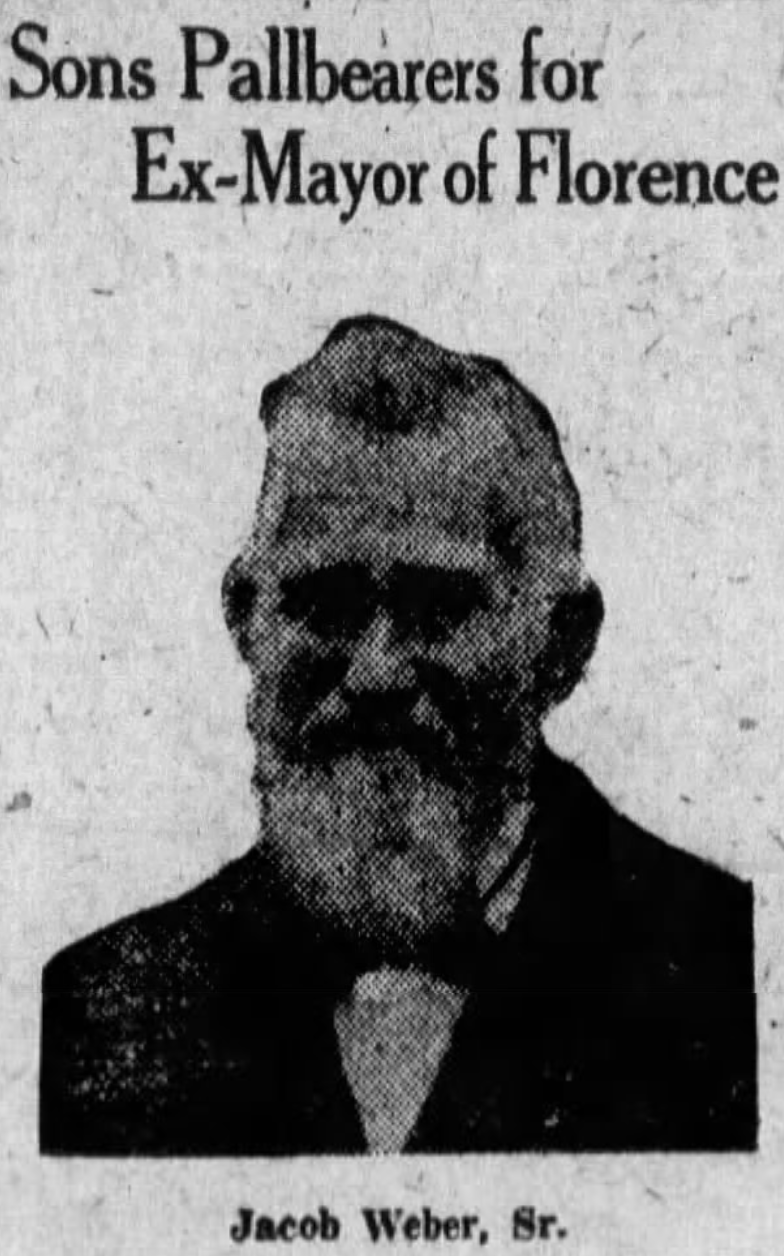
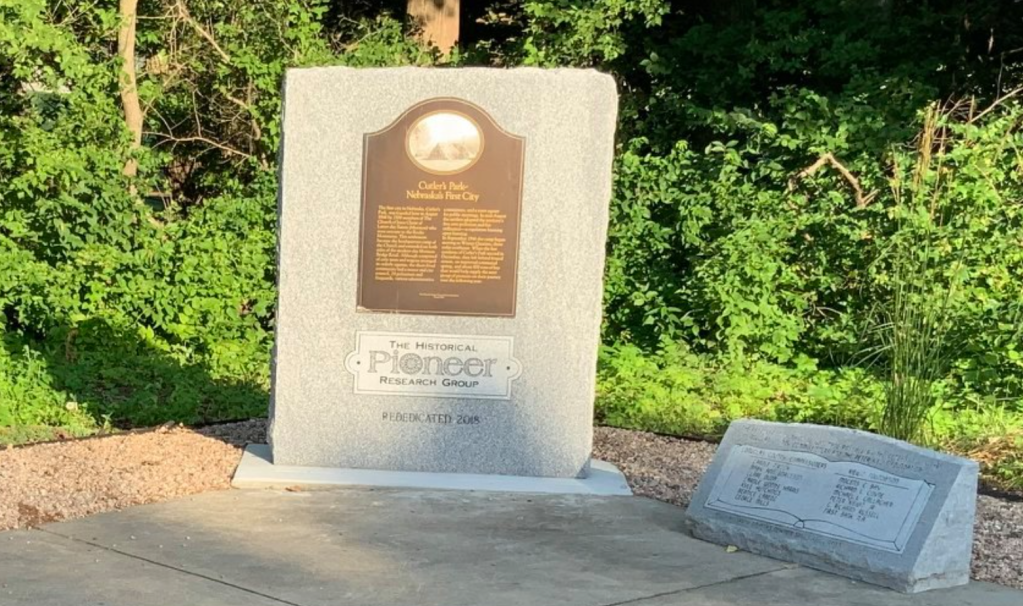
Leave a comment